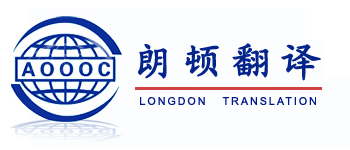China is gradually shedding its reputation as theworld’s technology copycat. Some Chinesecompanies are also leading the way in new servicesand business models.
中國正逐漸甩掉全世界最大科技山寨國的名聲,一些中國公司在新的服務(wù)和商業(yè)模式上已經(jīng)處于領(lǐng)先地位。
The move toward pioneering also reflects agenerational change, says Derrick Xiong, chiefmarketing officer of drone maker Ehang.
無人機制造商億航Ehang的首席營銷官熊逸放表示,中國企業(yè)引領(lǐng)新潮流也反映出一種代際變遷。
The new generation of entrepreneurs, “the post-90s, were born to be global,” he says; “theyhave never experienced hard times in China so they have a completely different mindset” moreakin to that of their peers in the US or Europe than their parents.
他說,新一代企業(yè)家都是“90后,出生在全球化時代。他們從未經(jīng)歷過艱難困苦,因此他們的思維方式完全不同”,比他們的父輩更接近美國或歐洲同齡人的思維。
China has embraced bike-sharing, pioneering a dockless model that offers cyclists advantagesover comparable services in London and New York: bikes are unlocked using mobile apps, andcan be picked up and left anywhere. Many are even GPS-tracked. Mobike (orange) and Ofo(yellow) have led the pack. One financier, only half joking, opines that the only barrier to entrywill be when they run out of colours.
中國迎來了共享單車時代,引領(lǐng)了無樁單車模式,為騎行者提供了比倫敦和紐約的同類服務(wù)更大的優(yōu)勢:單車可通過手機應(yīng)用解鎖,騎車者可隨地騎走或停放單車。很多單車甚至配有GPS定位。摩拜(橙色)和Ofo(黃色)是最大的兩家。一名金融家開玩笑說,進入這一行唯一的障礙將是顏色不夠用了。
A subsequent crackdown by regulators, irked at the piles of dumped bikes littering cities,portends potholes on the road. But that hasn’t deterred the like of LimeBike from rolling out asimilar service in the US states of California, North Carolina and Florida following the dockless,QR code-based Chinese model.
但隨后監(jiān)管者決定對單車進行整頓,因為他們對廢棄的單車亂丟在各個城市感到很惱火。這預(yù)示著共享單車未來的發(fā)展路途不會太平坦。但這并未阻止LimeBike之類的共享單車追隨無樁、掃碼的中國模式,在美國加州、北卡羅來納州和佛羅里達州推出類似服務(wù)。
For much of China, the QR code, a type of barcode, is the key that unlocks the digital world. Aswipe of the matrix with a mobile device lets a user hire a bike, pay for goods and grab a newcontact’s details: why swap business cards when you can just hover your phone over that ofyour new acquaintance?
對中國大多數(shù)地區(qū)來說,二維碼是解鎖數(shù)字世界的鑰匙。用戶用移動設(shè)備掃一掃這個圖案,就可以租用共享單車、花錢買東西以及獲取新聯(lián)系人的信息:當你只要用手機掃一下新朋友的手機就能交換信息時,何必要交換名片呢?
Companies in the US, where the QR code was dismissed in 2013, now seem to be changingtheir view. Snapchat picked up the idea in 2015, allowing users to follow one another as easilyas their WeChat peers by scanning each others’ QR codes, and proceeded to facilitate theiruse to access websites. Facebook this year is piloting ‘rewards’ QR codes to secure discountsin certain shops, while Spotify has adopted the technology to allow users to share music.
二維碼在2013年受到美國企業(yè)的摒棄,如今美國企業(yè)似乎變了主意。Snapchat于2015年采納了這一理念,允許用戶通過掃碼來加好友,就像微信一樣方便,并進而使用二維碼為用戶訪問網(wǎng)站提供便利。臉書今年試點“獎勵”二維碼,用戶在指定商戶掃碼可打折,同時Spotify推出了掃碼分享音樂。
WhatsApp’s launch last month of business accounts showed the US messaging app takinganother step down the path forged by Chinese peer WeChat.
WhatsApp上個月推出企業(yè)賬戶,這表明這款美國消息類應(yīng)用程序在由中國同行微信開辟的道路上又邁了一步。
WeChat, Tencent’s chat and social media app, has long courted the business world. It is howgovernment, celebrities and businesses from Burberry to Mondelez connect to customers in theChinese social media space spicing up their chat with cool fashion show snaps, special offersand sales promotions and post information or news. WeChat has more than 20m ‘officialaccounts’, according to industry estimates, though not all are verfied.
微信是騰訊旗下的聊天和社交媒體應(yīng)用,一直在向商界進軍。在中國,政府、名人以及從巴寶莉到億滋等企業(yè)使用微信與社交媒體中的客戶建立聯(lián)系(發(fā)布超酷的秀場照片、特別折扣和促銷活動來活躍與用戶的交流)、發(fā)布信息或新聞。根據(jù)業(yè)內(nèi)估計,微信如今擁有超過2000萬個“公眾號”,但并非都是認證賬號。
WhatsApp is now jumping on that bandwagon, following in the footsteps of WeChat. In aneffort to help businesses keep in touch with their customers and to make money the Facebook-owned app has begun offering ‘verifed profile’ accounts, so customers know they are contactingthe right shop or service.
WhatsApp如今正準備投身于此,效仿微信。為了幫助企業(yè)與客戶保持聯(lián)系并賺取利潤,這款臉書旗下的應(yīng)用開始提供“認證”賬戶,這樣一來客戶就知道他們聯(lián)系的是正牌商店和服務(wù)提供商。
The world drew a collective gasp when Amazon splashed out $13.7bn in June to buy WholeFoods, bringing its cut-throat online competition to the bricks-and-mortar world of artisanalbreads and organic kale. But Chinese rivals were ahead of the game. E-commerce giantAlibaba snapped up stakes in domestic supermarket group Lianhua in May and before that, indepartment store Intime. JD.com, which operates a similar asset-heavy model to Amazon, hasoutlined plans for a massive bricks and mortar presence.
今年6月,當亞馬遜斥資137億美元收購全食超市、把它殘酷無情的線上競爭帶到售賣手工面包和有機甘藍的實體店時,整個世界倒吸了一口氣。但中國競爭對手已經(jīng)走在了前頭。電商巨頭阿里巴巴于5月收購聯(lián)華超市集團股份,之前還投資了銀泰百貨商場。采用與亞馬遜類似的重資產(chǎn)運營模式的京東也計劃大規(guī)模進軍實體店。

Alibaba calls the model “new retail”, fusing the physical and online worlds to better pleasecustomers try on a frock, buy cat food from the store for later delivery and a rice box totakeaway there and then and ultimately amass more data for itself.
阿里巴巴將這種模式稱為“新零售”,把實體店和網(wǎng)絡(luò)世界結(jié)合起來,以更好地取悅客戶,并最終為自己積累更多數(shù)據(jù)。顧客可以在店內(nèi)試穿連衣裙、買貓糧,商家隨后送貨上門,或點份外賣帶走。
There are plenty of innovations still to tap or expand. Mobile payments in the US are a fractionof those in China, where the market was worth $8.8tn last year, according to iResearch. Giftingdigital money for instance, at Chinese new year is taking hold elsewhere, already adapted inIndia via Tencent-backed Hike, a New Delhi-based messaging unicorn.
現(xiàn)在還有很多創(chuàng)新有待開發(fā)和拓展。美國移動支付市場規(guī)模遠不及中國,根據(jù)艾瑞咨詢的數(shù)據(jù),去年中國移動支付市場價值8.8萬億美元。比如中國人春節(jié)時相互發(fā)放的電子紅包正走出國門:由騰訊注資的Hike已經(jīng)在印度推出電子紅包服務(wù)。Hike總部位于新德里,是一家消息應(yīng)用獨角獸公司。
But arguably the most covetable trend in China is the most basic: education. China last yearproduced roughly nine times as many graduates in science, technology, engineering andmathematics as the US. Even allowing for China’s bigger population, it still punches heavilyabove its weight, suggesting lot of room for many more innovations to be birthed in China.
但中國最令人稱羨的趨勢也是最基本的:那就是教育。去年中國培養(yǎng)的科學(xué)、技術(shù)、工程和數(shù)學(xué)方面的畢業(yè)生大約是美國的9倍。即使考慮到中國人口眾多,這一數(shù)量也相當龐大,這也意味著還有更多的創(chuàng)新會在中國誕生。




